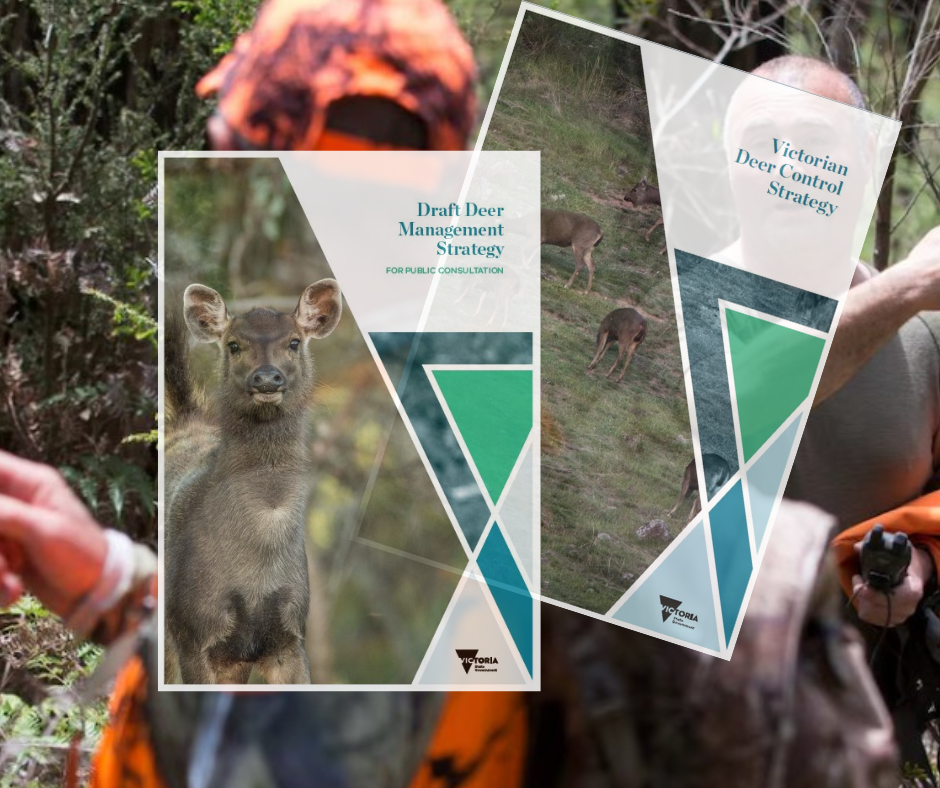Victoria’s $20 million Deer Control Strategy failed to define its goals, measure its outcomes, or embrace the very people doing the heavy lifting. It’s time to get serious about what works…and what doesn’t.
The 2021 Victorian Deer Control Strategy is lurching toward its final year with nearly $20 million spent, and little to show for it beyond missed opportunities, bureaucratic theatre, and a deliberate exclusion of the very people best placed to help. It was never a true strategy – it lacked clear goals, measurable outcomes, and any serious effort to evaluate success. Instead, it functioned as a costly ideological exercise: long on optics, short on outcomes, and increasingly divorced from the practical realities on the ground.
Ironically, one of the few tangible deliverables was a statewide deer abundance report. That report quietly dismantled the central myth used to justify the strategy in the first place — the claim that Victoria was home to “one million wild deer or more.” Repeated endlessly in public communications, this figure was never more than a guess. The reality turned out to be far lower. Yet millions were spent based on an inflated premise that proved to be a gross exaggeration.
Worse still, the strategy replaced a promised Deer Management Strategy, which had been a commitment under the 2016 Sustainable Hunting Action Plan, with a Deer Control Strategy that made no effort to incorporate balanced use, impact-based management, or sustainable harvest. Instead of working with hunters, landholders, and processors, it marginalised them. Instead of defining clear conservation targets and prioritising areas with genuine ecological risk, it treated all deer in all places as a uniform threat to be removed, regardless of context, consequence, or cost.
In practice, this approach ignored the simple reality that deer are not inherently a problem, impacts are. Effective deer management must begin with a clear understanding of what you’re trying to protect, what damage is occurring, how deer are contributing to it, and what level of control is necessary to address it. That means setting ecological objectives, targeting resources to areas where deer are actually causing harm, and measuring outcomes. You can’t call it management, let alone success, if you don’t know what you’re trying to achieve or whether you’ve achieved it.
There are parts of Victoria where deer are absolutely a problem. In sensitive ecological or cultural heritage areas, focused and well-resourced control programs are both necessary and appropriate. But that does not justify a blanket, ideological campaign that fails to differentiate between where deer are causing serious damage and where they are not. An inclusive, science-based deer management strategy does not preclude or inhibit control where it’s needed. It simply reflects and responds to reality, rather than the imagined version conjured by activists with little practical understanding of land management.
In fact, over the same four years that the Deer Control Strategy has burned through $20 million while sidelining recreational hunters, Victoria’s 50,000 licensed deer hunters have done far more, removing an estimated half a million deer, and contributing more than $800 million to the Victorian economy. This isn’t conjecture, it’s a measurable, sustained impact in both environmental and economic terms. While SSAA Victoria does not accept the flawed premise that any deer removal is inherently beneficial, that is the very assumption underpinning most government-funded control. If that logic is to be applied consistently, then the contribution of recreational hunting utterly dwarfs that of the strategy. In fact, it renders it statistically and operationally insignificant.
The strategy’s design was flawed from the outset. It assumed outcomes without evidence, sidelined stakeholders who actually deliver results, and buried accountability beneath layers of bureaucratic process. It established the Victorian Deer Advisory Group, not as a genuine forum for consensus, but as a mechanism to legitimise a pre-determined agenda, one dominated by lobby groups rather than land managers.
With the funding window closing in 2025, Victoria now faces a choice. It can double down on a model that’s expensive, ineffective, and disconnected from the community, or it can pivot to the inclusive, impact-focused approach that was originally promised. That means returning to the 2018 Draft Deer Management Strategy, a framework that acknowledged the complexity of the issue, proposed a multi-tool solution, and sought to bring together hunters, landholders, public land managers and conservationists to achieve real outcomes.
Deer control without purpose is not a strategy. Deer management without impact monitoring is not success. Victoria deserves better than ideology dressed up as policy; it deserves a model that works.


